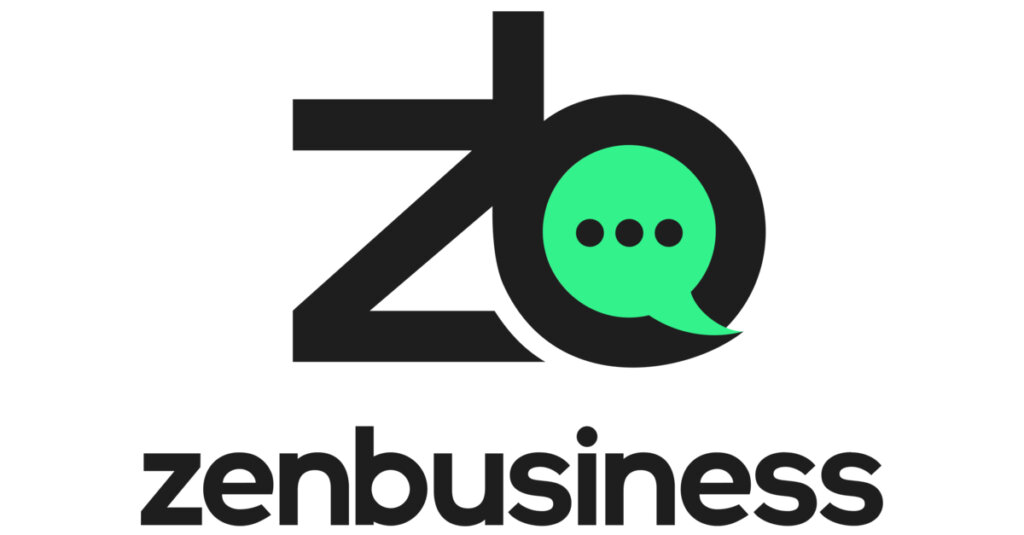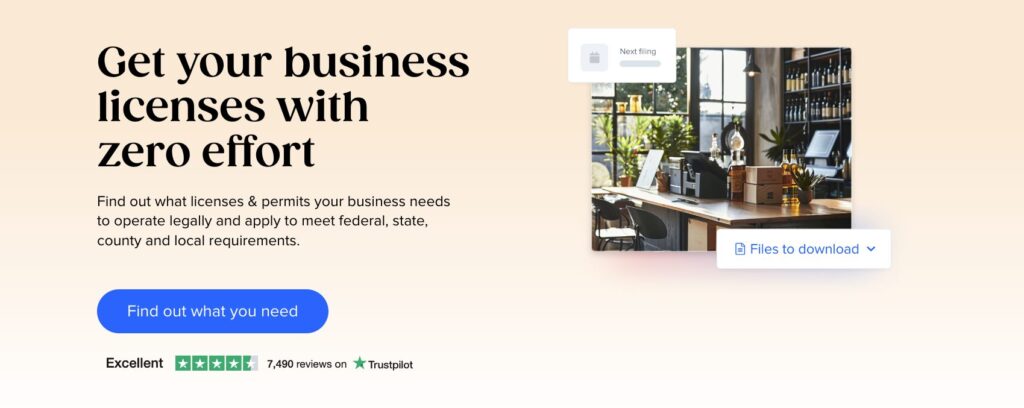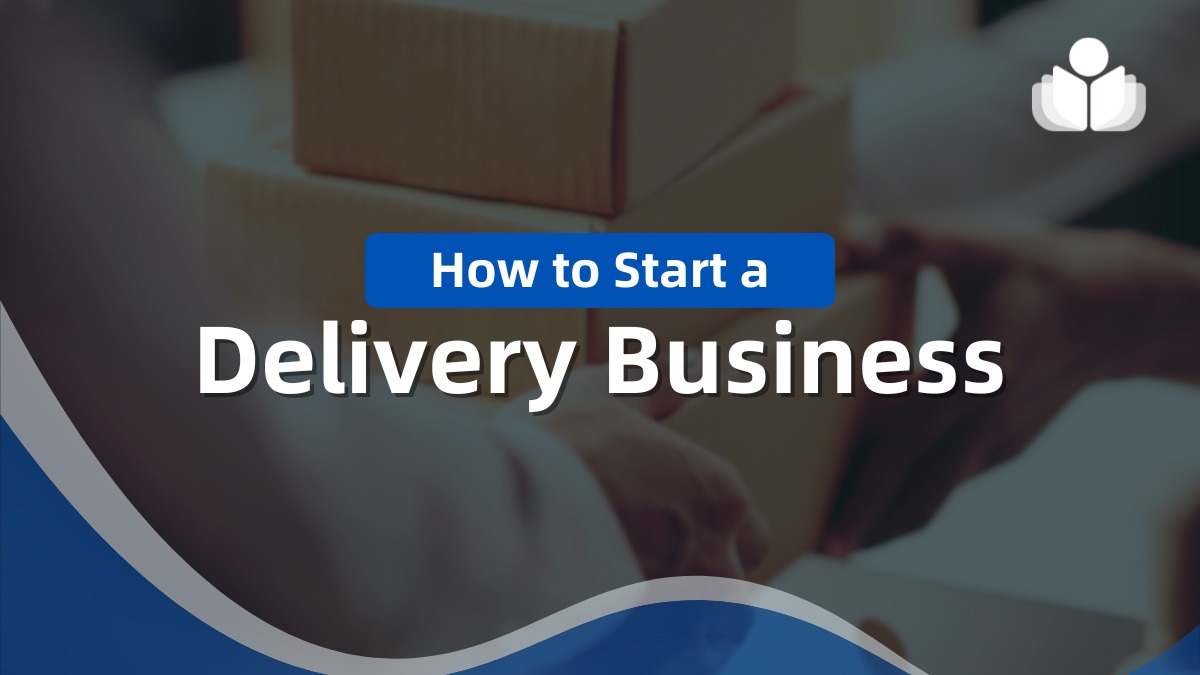The delivery services industry is experiencing a surge in demand due to increased orders for instant doorstep delivery. Consumers now enjoy simplified convenience through technology thanks to digitalization.
Businesses, both global and local, are restructuring to improve. From 2017 to 2022, the US couriers and local delivery services market experienced an annual growth rate of approximately 6.9%.
This trend is expected to continue in the future. Effective strategies are necessary to succeed in the delivery service business, whether online or offline. If you’re considering starting a delivery service business, this blog provides guidance.
>> Use Tailor Brands to Register Your Delivery Business >>
What Does the Delivery Business Involve?
A delivery company moves items, such as essentials, meals, clothing, medical supplies, and beverages, to a customer’s location. Typically, these items are dispatched from a warehouse, processed through distribution centers, and delivered through last-mile logistics.
Customers can choose between same-day, next-day, or standard delivery options based on their order and associated delivery fees. As the holiday shopping season approaches, retailers will focus on offering quicker deliveries to impress their customers.
Pros & Cons of Starting a Delivery Business
Pros
- Growing Market Demand: More people now need delivery services because of increased online shopping and a desire for easy access in cities and rural areas. This situation offers a good chance for starting new delivery companies.
- Flexible Business Models: Delivery companies can work in different sectors, such as delivering food, parcels, or groceries, which lets them cater to specific market demands and personal interests.
- Low Initial Investment: The cost to start a delivery service can be quite low, particularly if you start with a few vehicles or those you already own.
- Scalability: There’s room for growth by starting in a local area and then expanding wider. Growth can come from adding more vehicles, moving into new areas, or offering more types of services.
- Technology Integration: Using technology to find the best routes, improve customer service, and increase business efficiency can make the company more profitable and keep customers satisfied.
>> Use Tailor Brands to Register Your Delivery Business >>
Cons
- High Competition: Many local and international companies compete in the delivery market. To stand out, companies need a special offer or focus on a specific market.
- Operational Challenges: Running a delivery business involves complicated and time-demanding tasks like keeping vehicles in good shape, planning routes, and making sure deliveries are on time.
- Regulatory and Insurance Requirements: Delivery companies must deal with a lot of rules and need the right insurance. These requirements can change a lot depending on the location and can cost a lot of money.
- Dependence on External Factors: Things like traffic, the cost of fuel, and the weather can affect how long deliveries take and how much they cost, which can affect the business’s profit.
- Customer Service Demands: Customers expect fast and reliable deliveries, which means the business has to work hard to keep its service great. This requires good systems and ways to communicate effectively.
12 Steps to Start a Delivery Business
To launch a delivery business, understanding the essential elements is crucial. Identifying a specific market niche, building a dedicated customer base, setting competitive prices, and marketing the business effectively are key steps.
Below are strategies and actions for starting your delivery service:
Step 1: Define your niche
Step 2: Build a delivery business plan
Step 3: Develop a Delivery Process
Step 4: Develop your Business as a Legal Entity
Step 5: Register for taxes, permits, and licenses
Step 6: Open a business bank account and business credit card
Step 7: Outline Delivery Rates and Terms
Step 8: Get business insurance policies
Step 9: Acquire delivery service insurance
Step 10: Equip yourself with the necessary tools and software
Step 11: Hire and train drivers
Step 12: Work on Your Online Presence and Advertising Measures
>> Use Tailor Brands to Register Your Delivery Business >>
Step 1: Define Your Niche
To begin a delivery business, the initial move is to select an industry you’re interested in.
The niche you pick significantly influences your starting expenses and other costs. While the delivery methods and procedures are similar across various businesses, here are the two main types of delivery services:
- Local delivery service: A local delivery service focuses on transporting goods or merchandise for businesses in the area. Starting a cargo van business could be a good option if you plan to deliver items within a set route covering a few zip codes. Consider working with contract drivers who use their personal vehicles for deliveries.
- Global delivery service: This courier service operates worldwide, delivering packages across continents. Working with companies like FedEx, DHL, or similar organizations allows for the delivery of products ordered or sent through these companies.
Step 2: Build a Delivery Business Plan
Every company with a business plan to define its purpose strives for success. Creating a plan allows you to monitor progress and implement changes to boost revenue. Below are several factors to consider in your business planning process:
- Monitor your budget closely
- Know your market and competition
- Use marketing tactics and set your business objectives
- Establish pricing according to your delivery service
- Prepare for obstacles and everyday tasks beforehand
- Recruit staff and drivers for delivery
- Train your staff properly
>> Use Tailor Brands to Start a Delivery Business >>
Step 3: Develop a Delivery Process
The intricate delivery process involves planning routes, loading packages into the driver’s vehicle, and delivering them to the customer’s doorstep. Below is a breakdown of the typical delivery process to guarantee successful deliveries and happy customers:
Optimizing Routes
New companies often use manual methods to plan their delivery routes, which can be very time-consuming and hard on drivers, even with as few as 20 stops.
Incorporating advanced technology to optimize routes benefits you from the beginning. As your number of delivery orders grows, having an efficient route reduces driver stress and ensures timely arrivals at destinations.
Monitoring Routes
Not monitoring properly can cause problems, such as:
- Having to call drivers to change routes for a canceled or new order, guessing who is available.
- Needing to call the driver for a customer’s ETA request makes the process longer.
- Route monitoring lets you and your customers know the delivery status by showing you where drivers are on their routes.
Accomplishing Last-mile Delivery
The last step in the delivery process involves your driver finishing their task by safely delivering the package. Customers anticipate their orders will arrive undamaged.
Use a route optimization tool to plan your final-mile deliveries and help your drivers meet their deadlines. This approach allows for more deliveries each day. Also, electronic proof of delivery should be implemented to document all orders.
>> Use Tailor Brands to Start a Delivery Business >>
Step 4: Develop your Business as a Legal Entity
Becoming a legally recognized business entity is a crucial step. First, choose a name for your business and design a logo. Next, register your delivery business as a Limited Liability Company (LLC), corporation, or partnership, depending on what suits your needs best.
An LLC registration service can simplify setting up your business entity by clarifying terms and conditions and ensuring a smooth registration process, preventing delays. For LLC registration, consider using one of the recommended companies.

Tailor Brands is an online service for registering businesses that give entrepreneurs a straightforward way to quickly and easily register their companies. They guide users through each legal step and the required paperwork to legally separate their business as its own entity.
Users of Tailor Brands can get a tax ID number, sign up for any needed licenses and permits, and find other resources to help set their business up for success.

ZenBusiness is a top registration service due to its speedy business filing capabilities and affordable incorporation fees. They offer customer support throughout the process for any inquiries, though they do not provide legal counsel.
Initiating a business may seem simpler than keeping it running, so ZenBusiness offers tools to simplify management. They assist with tax documentation and can act as a registered agent, alleviating some of your responsibilities.

Northwest Registered Agent is known for its company registration services, emphasizing transparency and genuine customer care. They openly share their pricing details and focus on delivering excellent, easy-to-reach customer support to ensure accuracy. Additionally, they prioritize the protection of your personal information.
Step 5: Register for Taxes, Permits, and Licenses

Obtaining the necessary state licenses and permits before launching your delivery services is crucial to avoid fines or more serious repercussions for your business.
Additionally, collecting sales tax on the services you offer may be required. It’s important to adhere to specific regulatory mandates or local licensing regulations. To learn more, you should:
- Speak to your county clerk’s office
- Seek assistance from a local association, as listed in the US Small Business Associations (SBA) directory of local business resources.
Step 6: Open a Business Bank Account and Business Credit Card

The next step for your delivery service is to open a business bank account. This keeps your company’s money separate from yours and safeguards your personal assets. It also makes accounting and tax preparation easier.
- After receiving your LLC or Corporation paperwork, open a business bank account.
- Talk to your local bank to learn about their banking services.
- Choose a credit card solution that fits your delivery business needs.
Also, having a business credit card helps because:
- It separates and tracks business expenses from personal ones.
- It improves your delivery company’s credit history for potential future loans.
>> Use Tailor Brands to Register Your Business >>
Step 7: Outline Delivery Rates and Terms
Make sure to set clear prices for your home delivery services. You can base your charges on distance or use a fixed base rate.
When planning your pricing, consider the areas your service will cover. For deliveries outside these areas, consider charging an additional fee. Your prices should cover your company’s operational costs, including vehicle upkeep, employee salaries, buying tools, and other expenses.
Step 8: Get Business Insurance Policies

Just like you need permits and licenses, your delivery business also must have insurance to follow the law and stay protected. Business insurance safeguards your company’s finances if you face losses.
Different insurance policies are available, but General Liability Insurance is a good starting point for small businesses. Workers’ Compensation Insurance is also important as it helps pay some of your employees’ wages if they get injured.
Step 9: Acquire Delivery Service Insurance
If you own a delivery services business, you’ll likely need commercial auto insurance to cover accidents and liabilities involving your delivery vehicles.
It’s wise to secure insurance for the packages you deliver. Without it, you might have to pay customers for any damage to their packages during delivery.
Consider consulting with a professional to understand additional insurance coverages that might be necessary. Having the correct insurance policies in place is crucial for operating your delivery business smoothly.
>> Use Tailor Brands to Register Your Business >>
Step 10: Equip Yourself with the Necessary Tools and Software
The right equipment is essential to ensure smooth operations and quick deliveries. Some necessary items include:
- Vans or trucks are used to carry out delivery tasks
- Ratchet straps to secure heavy packages in transit
- GPS systems to improve tracking and simplify the drop-off process
- Fleet management software for monitoring your vehicles, providing geolocation, vehicle diagnostics, and other data
- CRM software for keeping customer information, identifying sales opportunities, running marketing campaigns, and recording service problems
Step 11: Hire and Train Drivers
Hiring and training efficient delivery drivers are key to your business success. Consider these points when choosing drivers:
- Determine their tasks, roles, and responsibilities.
- Schedule their work hours.
- Decide between offering full-time or part-time positions according to your policy.
- Check for a valid driver’s license and a clean driving history.
- Inquire about their experience with the vehicles they’ll be driving.
- Assess their knowledge of the delivery areas.
- Discuss pay structures, bonuses, and other details.
Training your drivers on company policies and productive work methods is also essential. Teach them to handle orders, navigate correctly, use optimized routes for deliveries, and obtain proof of delivery.
Step 12: Work on Your Online Presence and Advertising Measures
Starting your new home delivery business also involves building a strong online presence. This encompasses all online sources that feature information about your brand.
There are several steps to take in this area. Firstly, develop a user-friendly website with fast load times, an attractive design, and essential information. Next, make sure to list your website on Yelp, Google My Business, and other key business directories.
Additionally, consider leveraging online marketing platforms to boost your online visibility. Combining social media marketing campaigns with a robust website can be very effective. Also, integrating Search Engine Optimization (SEO) into your website is crucial.
SEO is vital because it helps people find your website through searches related to what you offer, giving you an advantage over competitors. Common strategies include:
- Conduct keyword research to find terms and phrases your customers use in search engines. Tools like aHrefs and Keyword Chef are helpful for this task.
- Create and optimize content using keywords from your research. Ensure it aligns with both your audience’s intent and your business goals.
- Improve web design to enhance how quickly your page loads and how it presents information, contributing to a better user experience, which search engines favor.
- Build a strong social media presence, as search engines consider a business’s social media following and engagement when ranking.
- Increase website authority by gaining more referring domains and having a noticeable presence on platforms like discussion sites.
These SEO strategies will help you stand out against competitors and impress your customers with your business’s strong online presence. Consider these methods as the main way to promote your business.
Hiring a reputable SEO agency or company is advisable due to the extensive work and expertise needed to build a solid online presence. If your budget allows, you also have other options. Popular choices include paying for ads, like Google Ads, and using traditional marketing techniques.
Types of Delivery Services
Three fundamental types of delivery services exist, differing in the initial investment size and the effort required to launch your business.
- Establish a local delivery service catering to nearby businesses, like grocery stores and restaurants, tailored to their specific needs. It’s affordable but requires building from scratch.
- Manage a bread route delivery service, distributing baked goods from renowned brands to established customers and stores. It’s costlier but provides built-in clientele and a recognized brand.
- Operate a corporate courier service for large retailers or courier companies. It offers a proven business model without the need to find customers, but franchise costs vary.
Starting a local delivery service presents typical startup challenges like building clientele, setting competitive prices, and earning a good reputation.
Acquiring a bread route or corporate delivery service offers a jumpstart with an established customer base and brand recognition.
While some bread routes may allow price flexibility, corporate delivery services typically offer fixed, market-tested pricing. This saves you from researching market rates and prevents pricing mistakes that could affect competitiveness.
>> Use Tailor Brands to Register Your Business >>
Equipment Needed to Set Up a Home Delivery Business
To operate your delivery business smoothly, you require a variety of equipment, such as:
Software
- Fleet management software for monitoring your company’s vehicles, tracking service dates, mileage, and driver assignments.
- GPS software to locate delivery vehicles and plan drop-offs, with tools like Garmin or Google Maps being useful.
- Website builder and coding tools for creating an online presence and managing company data, including SQL Database for metrics.
- Accounting software to handle finances, with options like QuickBooks Online available online.
- CRM software to understand and improve customer experiences by analyzing data on customer interactions with your business.
Hardware
After setting up your software needs, focus on acquiring these physical resources:
- Trucks and vans for deliveries, with options for customization to meet specific business needs.
- GPS systems to enhance location tracking and ease the delivery process.
- Cell phones or radios for communication, especially when facing delivery challenges. Consider customization for specific operational needs.
- Ratchet straps to secure heavy items during transport.
- Card readers and tablets are used to finalize sales, with tablets for customer signatures and card readers for payment processing.
- As you compile this equipment list, decide on your financing method, whether buying outright or through hire purchase, and include this in your business plan.
What Type of Costs Are Involved in Starting a Delivery Service?
The main initial expenses for starting a delivery business are:
- Vehicle purchase
- Vehicle maintenance
- Insurance premiums
- Fuel costs
- Equipment costs
- Delivery driver payments
- Fees for business licenses
- Marketing costs
>> Use Tailor Brands: Start Your Delivery Business >>
How Can You Decide Your Pricing Structures?
Standard delivery fees might include charges for mileage based on the distance covered and for fuel. Charges may also apply for deliveries that take more time than usual. Extra fees could be added for deliveries during rush hours, waiting times, after-hours, and depending on the size of the packages.
Work on Your Customer Engagement Levels
Improving your business performance heavily relies on providing top-notch customer service. Ensure your customers have access to up-to-date information about your business’s delivery services.
Customers appreciate being kept in the loop about their product’s delivery time and safety. Investing in a logistics company might be necessary to create effective solutions for these concerns.
It’s important to keep customers informed about their delivery’s progress, including details like packaging and shipping methods, along with the most accurate expected delivery time.
This strategy can also reduce last-mile delivery costs because informed customers are more likely to be available to receive their packages, cutting down on failed delivery attempts and enhancing the overall customer experience your company delivers.
>> Use Tailor Brands to Start a Delivery Business >>
How to Start a Delivery Business – FAQs
Bottom Line – How to Start a Delivery Business
The success of starting a business relies on the effort you invest in this new endeavor. When launching a home delivery business, you have numerous paths to consider, and being diligent is crucial for achieving the best outcomes. This becomes especially important in a competitive niche.
 Sections of this topic
Sections of this topic
















